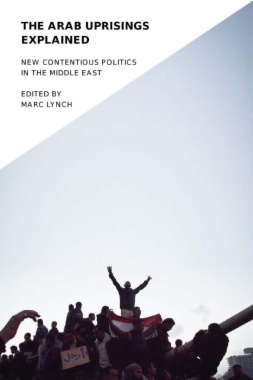Why did Tunisian protests following the self-immolation of Mohammed Bouazizi lead to a massive wave of uprisings across the entire Arab world? Who participated in those protests, and what did they hope to achieve? Why did some leaders fall in the face of popular mobilization while others found ways to survive? And what have been the lasting results of the contentious politics of 2011 and 2012? The Arab uprisings pose stark challenges to the political science of the Middle East, which for decades had focused upon the resilience of entrenched authoritarianism, the relative weakness of civil society, and what seemed to be the largely contained diffusion of new norms and ideas through new information technologies.
In this volume, leading scholars in the field take a sharp look at the causes, dynamics, and effects of the Arab uprisings. Compiled by one of the foremost experts on Middle East politics and society, The Arab Uprisings Explained offers a fresh rethinking of established theories and presents a new framework through which scholars and general readers can better grasp the fast-developing events remaking the region. These essays not only advance the study of political science in the Middle East but also integrate the subject seamlessly into the wider political science literature. Deeply committed to the study of this region and working out the kinks of the discipline, the contributors to this volume help scholars and policymakers across the world approach this unprecedented historical period smartly and effectively.
- Table of Contents
- Acknowledgments
- 1. Introduction, by Marc Lynch
- 2. Theories of Transition, by Daniel Brumberg
- Part I: Regional and Cross-National Dimensions
- 3. Diffusion and Demonstration, by David Patel, Valerie Bunce, and Sharon Wolchik
- 4. Authoritarian Learning and Counterrevolution, by Steven Heydemann and Reinoud Leenders
- 5. Media, Old and New, by Marc Lynch
- 6. Inter-Arab Relations and the Regional System, by Curtis R. Ryan
- Part II: Key Actors
- 7. States and Bankers, by Clement M. Henry
- 8. Arab Militaries, by Robert Springborg
- 9. Political Geography, by Jillian Schwedler and Ryan King
- 10. Labor Movements and Organizations, by Vickie Langohr
- 11. Islamist Movements, by Quinn Mecham
- 12. Elections, by Ellen Lust
- Part III: Public Opinion
- 13. Political System Preferences of Arab Publics, by Mark Tessler and Michael Robbins
- 14. Political Attitudes of Youth Cohorts, by Michael Hoffmann and Amaney Jamal
- 15. Constitutional Revolutions and the Public Sphere, by Nathan J. Brown
- 16. Conclusion, by Marc Lynch
- List of Contributors
- Index

